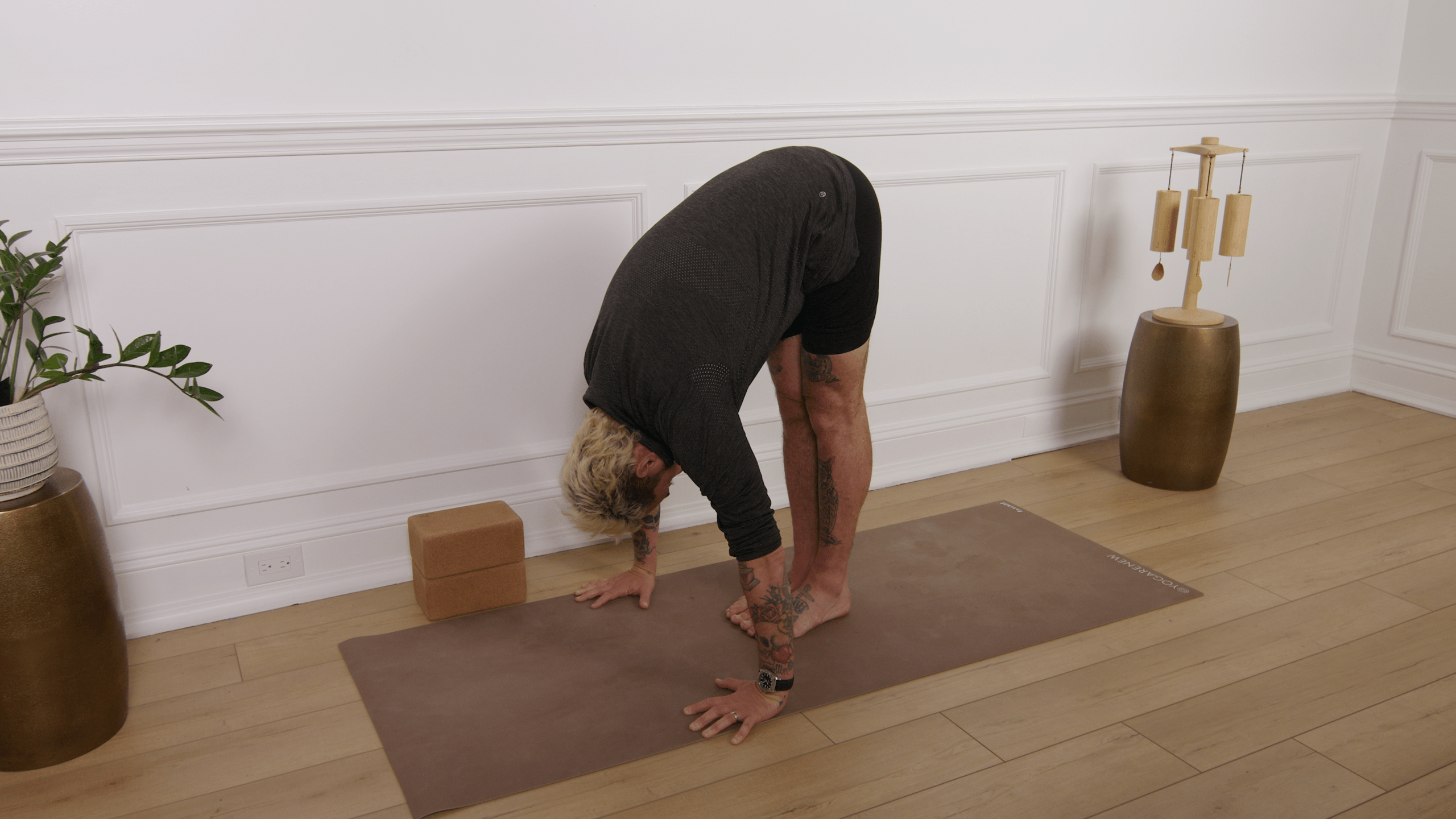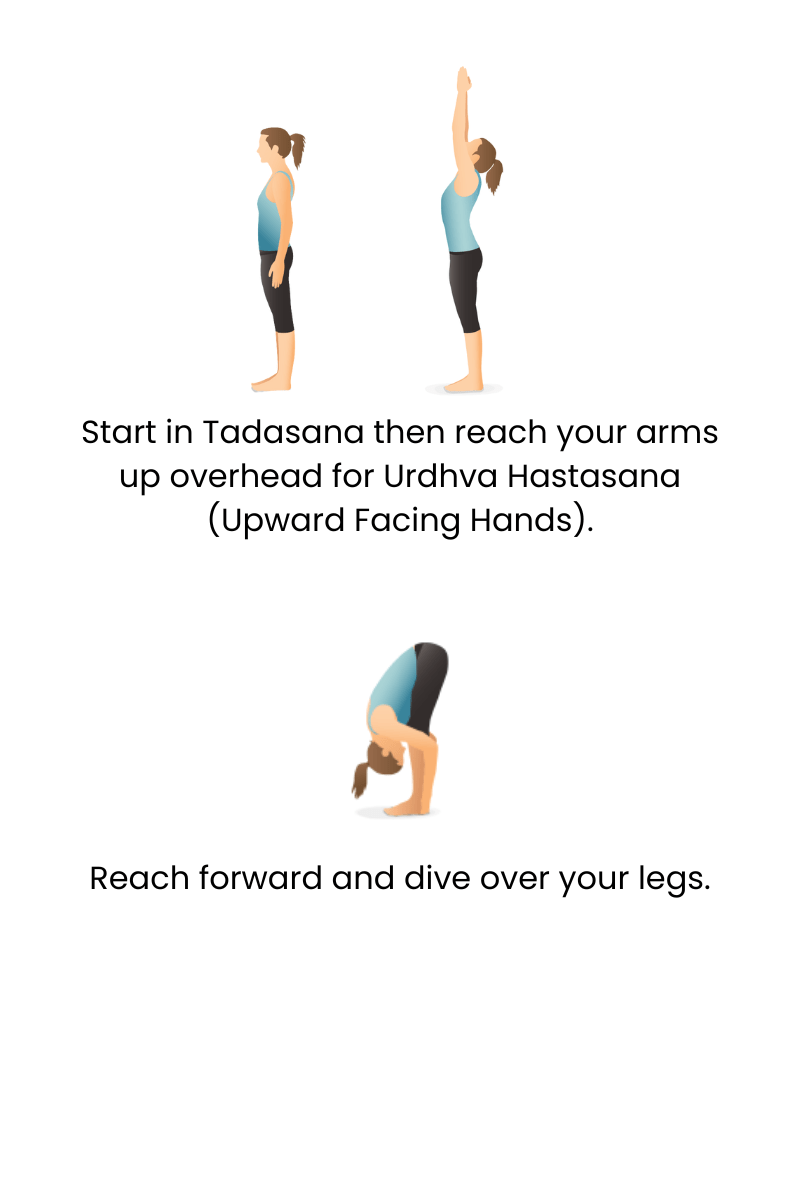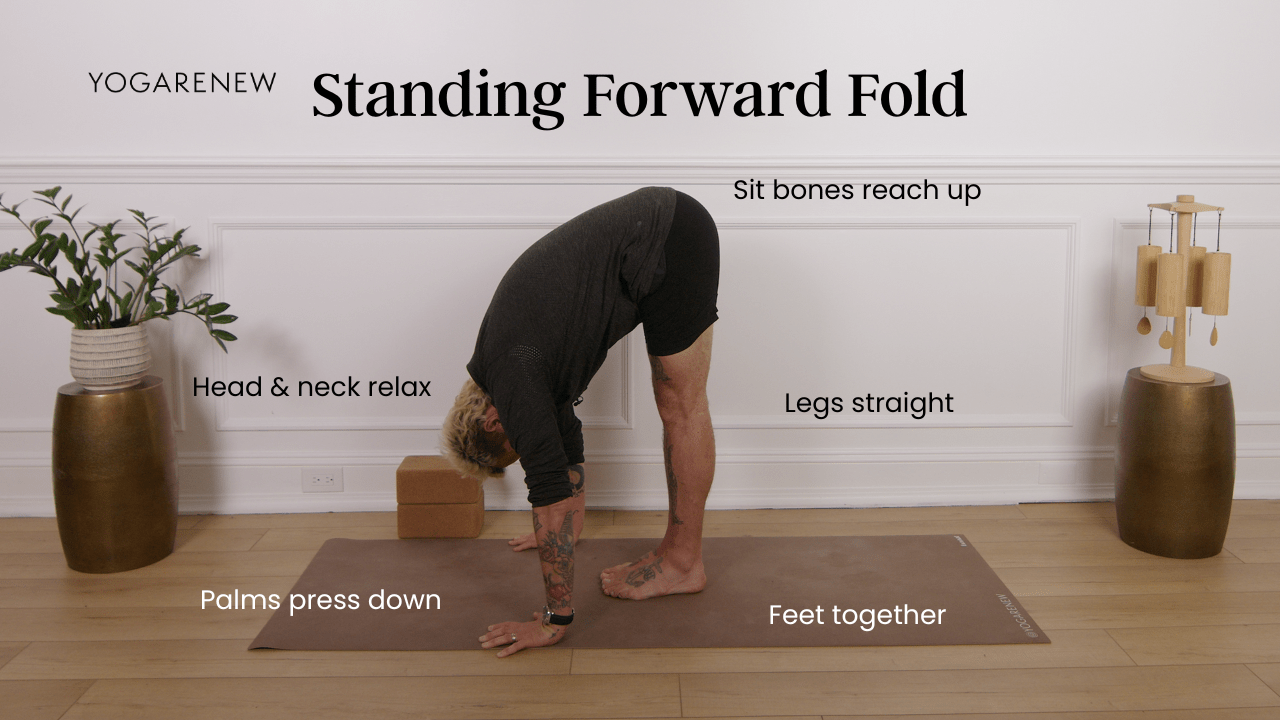What is Standing Forward Fold?
English Name: Standing Forward Fold
Sanskrit Name: Uttanasana (pronounced oot-tan-AHS-uh-nuh)
Category: Forward Fold, Standing, Calming, Foundational

English Name: Standing Forward Fold
Sanskrit Name: Uttanasana (pronounced oot-tan-AHS-uh-nuh)
Category: Forward Fold, Standing, Calming, Foundational
Standing Forward Fold, or Uttanasana, is a classic yoga pose that involves folding the torso over the legs while standing. Though often used as a transitional pose, it offers deep physical and mental benefits on its own—stretching the hamstrings, calming the nervous system, and encouraging introspection.
This posture can be both grounding and rejuvenating. Whether practiced actively or passively, Uttanasana invites you to surrender tension, deepen your breath, and soften the mind.


Uttanasana is a deeply grounding and rejuvenating pose. It’s more than just a stretch—it’s a reset button. Folding forward turns your focus inward, slows your breath, and invites physical and mental surrender. While often overlooked in flow classes, when given space, this pose can be a gateway to calm, clarity, and deep release.
Practiced regularly, Standing Forward Fold supports flexibility, focus, and emotional balance. Whether you’re warming up, cooling down, or taking a pause in your day—Uttanasana meets you where you are.
Slightly bent is usually better for protecting your back and allowing a deeper fold over time.
No problem—use blocks, rest hands on your shins, or let them hang.
Yes, with modifications. Keep a wider stance and avoid compressing the belly.
Anywhere from 5 breaths to 2 minutes, depending on the purpose (active vs. restorative).
Your New Favorite Yoga App. For Free.